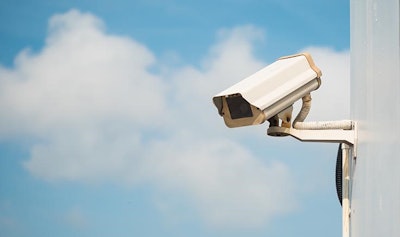
Security threats for cannabis cultivators can vary by state, but ensuring the security of the product is a universal concern, according to Jeff Corrall, head of strategic partnerships for March Networks, a provider of IP video surveillance systems for the banking, retail and cannabis industries.
Here, Corrall outlines his top advice for cultivators looking to mitigate both internal and external security risks in their facility, from choosing the right video surveillance system to more effectively tracking plants.
1. Know the regulations.
Some states have rules when it comes to security in the cannabis industry, and it is important to first and foremost comply with these regulations, Corrall says.
Often, state rules focus on video quality and retention time, which is typically 45 to 90 days, he says. Video resolution is generally required to be 720p at 15 frames per second, he adds, and some states or municipalities may require that all or part of the video is recorded off-site.
2. Identify the risks.
Once cultivators satisfy the regulatory requirements of securing their facility, they should take stock of any additional risks that exist and that could be mitigated through additional security measures, Corrall says.
“The security around a cultivation facility is ensuring obviously the security of the product—making sure that product is not being taken out of the facility when it’s not supposed to be and you’re not seeing losses there, and then making sure security isn’t being compromised through somebody going in and stealing stuff, breaking in or working with employees to get product out,” he says.
3. Invest in a reliable video surveillance system.
A video surveillance system is essential for cannabis businesses, and sometimes required by law, Corrall says, and it is important to choose a reliable system.
“When something goes wrong, you want the video to be there,” he says. “If you don’t buy a reasonably designed surveillance system, then it’s not going to be there when you need it.
“Historically in video surveillance, a lot of people put their recorder in place, they put their cameras up, and then they wait for something bad to happen,” Corrall continues. “And when they go to find video, it’s not there because the system was down, or a camera wasn’t working. We have a solution that’s actively checking the health status of the system and then reporting to the customer when something’s wrong, so they can correct it.”
Business owners should constantly evaluate their video surveillance systems to ensure they keep up with the business’s needs, he adds. “Especially with people in a cultivation or dispensary that has been established and [they] have bought a system a couple years ago, they just threw a video system in and later found that it was either unreliable or it didn’t have the features that they would be looking for, like remote access.”
4. Select the right security camera for your business.
When choosing a camera for the facility’s video surveillance system, cultivators should select one that is both cost-effective and right for the business, and storage can be a big factor, Corrall says.
Since some state laws require that cannabis businesses retain between 45 and 90 days of high-quality video that has a high frame rate, this can quickly consume the system’s storage space. Video usually requires high bandwidth and large storage capacity, so selecting efficient cameras that use a low amount of bandwidth to acquire video is key.
“If you select the right camera that’s lower bandwidth consumption, you can reduce your storage by up to 75 percent, which is probably the biggest cost of a video surveillance installation,” Corrall says.
5. Implement video surveillance in your delivery trucks.
Once the facility has a reliable video surveillance system and the proper cameras in place, it may be wise to extend video surveillance to delivery trucks in vertically integrated operations, Corrall says. This way, as the product goes through the seed-to-sale process, from the cultivation facility to the dispensary, it is tracked with video to ensure it is securely transported from one location to another.
6. Put your state-mandated RFID tracking system to work.
Many states that have legalized adult-use, such as Colorado, require RFID tracking for plants in cultivation facilities. This often requires a substantial investment from the cultivator, but the tags don’t do much outside of keeping the operation compliant, Corrall says. Additional technology can be implemented, however, to help cultivators keep better tabs on their product.
“By adding a few RFID control points and our surveillance system, we can tell you when and who and how product has moved around your facility at any given time in an automated way,” he says.
For example, if a state auditor comes into a facility and discovers that a plant is in flowering but is registered in the state tracking system as being in the vegetation room, the cultivator can face a fine or other penalty, and they may not know how the mistake happened or how to prevent it from recurring. With a more in-depth tracking system, however, the cultivator can trace the exact steps that led to the plant moving from vegetation to flowering.
“They can go train employees and do whatever they need to do in order to maintain compliance,” Corrall says. “It also helps them with the state and auditors and the government because they’re being proactive and they’re working hard to maintain their compliance.”
7. Ensure proper equipment installation.
The surveillance industry is largely conducted through an integration partner network, Corrall says, and companies like March Networks have integration partners that are certified to install a particular manufacturer’s products. Ensuring proper installation through these certified partners is essential when setting up security equipment, he says.
“They resell and install the product, and that’s really important,” Corrall says. “A DIY-type surveillance solution that you’d put in your home for your dispensary is probably not the right way to go. You definitely want to find an integration partner that specializes in video surveillance that is certified by whatever manufacturer they’re installing.”
Top Image: © boophuket | Adobe Stock

























